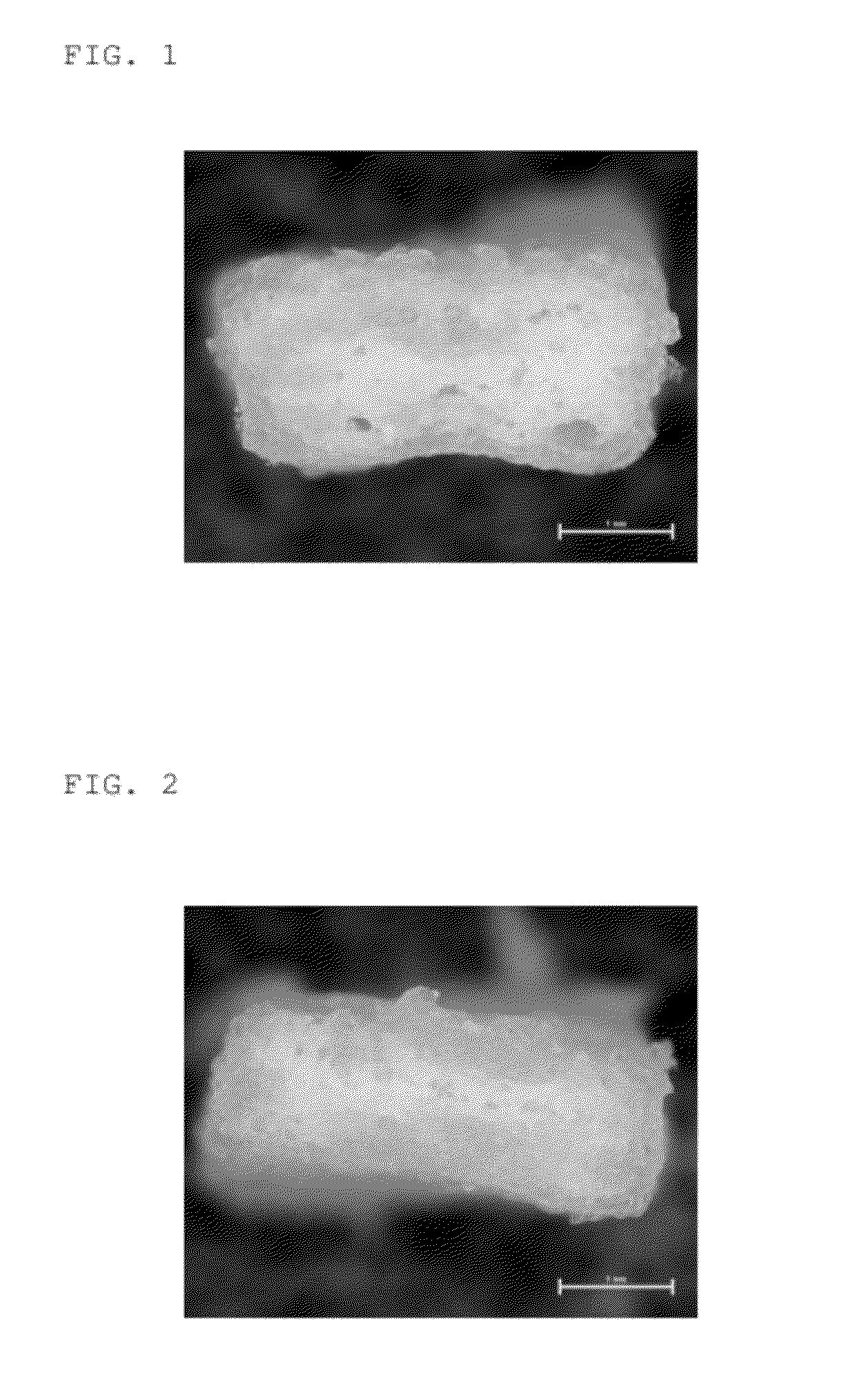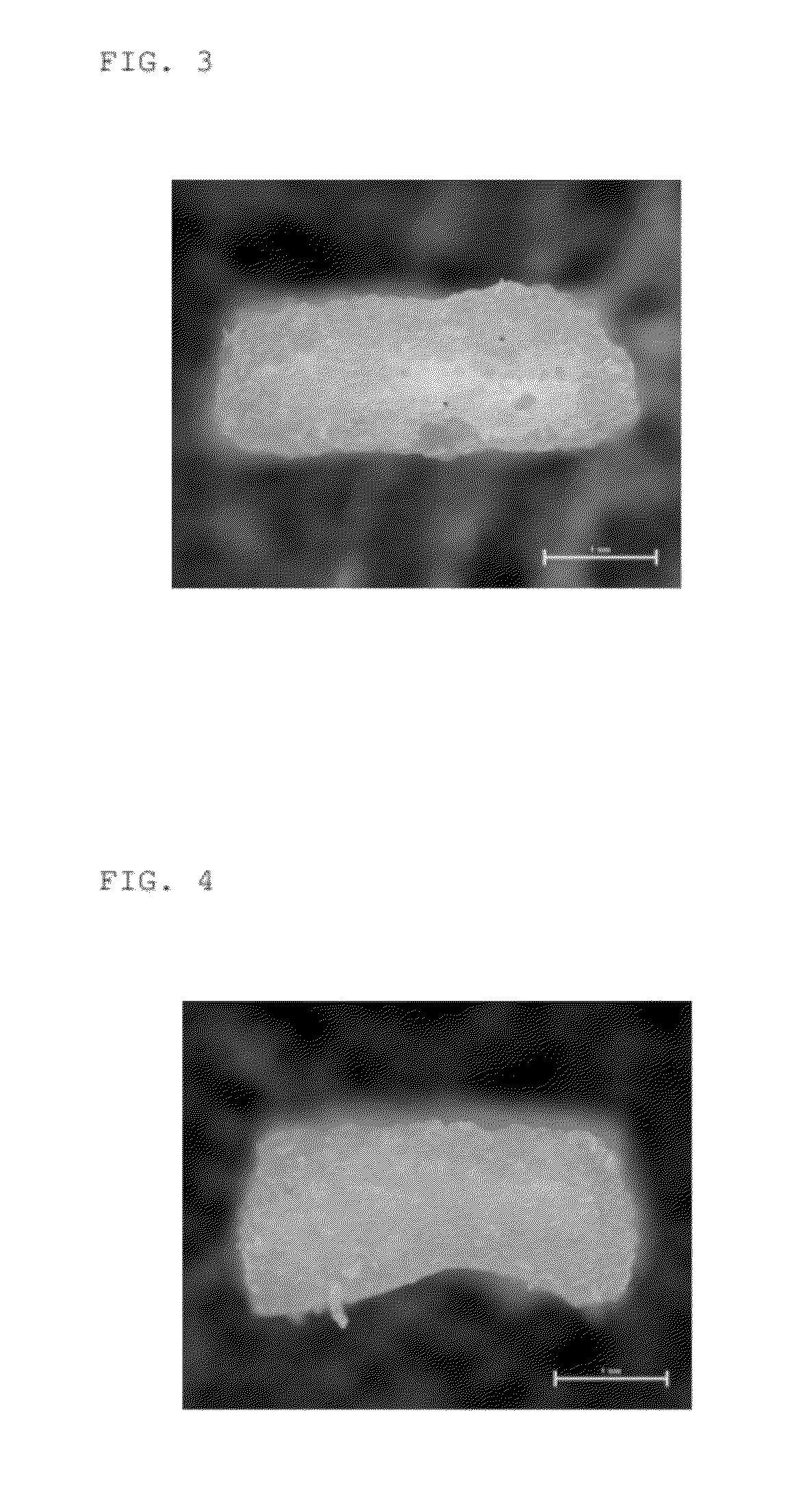Instant noodles and method for producing the same
- Summary
- Abstract
- Description
- Claims
- Application Information
AI Technical Summary
Benefits of technology
Problems solved by technology
Method used
Image
Examples
experimental example 1
Experiment Regarding the Difference of Steam Used and the Stack Structure of the Noodle String
[0047]430 ml of kneading water in which 20 g of salt and 5 g of phosphate (monophosphate:polymer phosphate=2:3) were dissolved was added to 1 kg of main raw material powder containing 750 g of wheat flour and 250 g of starch. This was adequately kneaded with a mixer to obtain a noodle dough. The obtained noodle dough was shaped to form a noodle belt having a thickness of about 11 mm. This noodle belt was used as the inner-layer noodle belt.
[0048]Next, 430 ml of kneading water in which 20 g of salt and 5 g of phosphate (monophosphate:polymer phosphate=3:2) were dissolved was added to 1 kg of main raw material powder containing 750 g of wheat flour and 250 g of starch. This was adequately kneaded with the mixer to obtain a noodle dough. The obtained noodle dough was shaped and rolled out to form an outer-layer noodle belt having a thickness of about 4 mm. Here, two outer-layer noodle belts w...
experimental example 2
Experiment Regarding the Stack Structure of the Noodle String and the Optimal Thickness of the Noodle String
[0060]Each of Sample 1 (three-layer) and Sample 2 (two-layer) that were the noodle belts formed in the same manner as in Experimental Example 1 and each having a thickness of 11 mm was strongly rolled out once by the rolling machine. Then, each of Samples 1 and 2 was consecutively rolled out three more times. Thus, the noodle belts of various final thicknesses were obtained. Each of these noodle belts was cut by using the square blade No. 9 cutting blade roll to obtain three-layer raw noodle strings or two-layer raw noodle strings.
[0061]Moreover, two noodle belts (outer-layer noodle belts) each having a thickness of 6 mm and two noodle belts (inner-layer noodle belts) each having a thickness of 6 mm were formed by using the same combination of raw materials as Samples 1 and 2. First, two inner-layer noodle belts were combined and then sandwiched between the outer-layer noodle...
experimental example 3
Experiment Regarding the Number of Superheated Steam Treatments
[0066]400 ml of kneading water in which 20 g of salt, I g of polymer phosphate, and 3 g of brine water were dissolved was added to 1 kg of main raw material powder containing 850 g of wheat flour and 150 g of starch. This was adequately kneaded with the mixer to obtain a noodle dough. The obtained noodle dough was shaped to form a noodle belt having a thickness of 12 mm. This was used as the inner-layer noodle belt.
[0067]Next, 400 ml of kneading water in which 20 g of salt, 1 g of polymer phosphate, and 3 g of brine water were dissolved was added to 1 kg of main raw material powder containing 850 g of wheat flour and 150 g of starch. This was adequately kneaded with the mixer to obtain a noodle dough. The obtained noodle dough was shaped and rolled out to form an outer-layer noodle belt having a thickness of 6 mm. Here, two outer-layer noodle belts were formed.
[0068]One inner-layer noodle belt having a thickness of 12 m...
PUM
 Login to View More
Login to View More Abstract
Description
Claims
Application Information
 Login to View More
Login to View More - R&D
- Intellectual Property
- Life Sciences
- Materials
- Tech Scout
- Unparalleled Data Quality
- Higher Quality Content
- 60% Fewer Hallucinations
Browse by: Latest US Patents, China's latest patents, Technical Efficacy Thesaurus, Application Domain, Technology Topic, Popular Technical Reports.
© 2025 PatSnap. All rights reserved.Legal|Privacy policy|Modern Slavery Act Transparency Statement|Sitemap|About US| Contact US: help@patsnap.com


